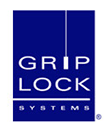Industry News
Industry Leaders Chart Path Forward For The Future Of Lighting At LRC Annual Conference
September 13, 2018
The lighting industry continues to be in a state of rapid transformation. New technologies and new business models are forcing the industry to rethink what it means to be a lighting company in the 21st century. To understand and address this issue, the Lighting Research Center (LRC) at Rensselaer Polytechnic Institute brought together leaders from the lighting industry, policy makers, and business development experts for its annual Partner’s event on September 5-6, 2018 in Troy, New York.
More than 100 participants attended the two-day conference, which is a private event for LRC Partners and Alliance members. This year’s event featured an impressive lineup of speakers and two panel sessions.
Decision sciences expert, renowned author, and entrepreneur Paul Schoemaker, inspired the audience with his keynote, “Taking Stock of Where We Are to Create the Future.” One of the themes of the talk was the importance of collective leadership for industry survival in this time of widespread turbulence, which is only going to intensify in the coming decade. He explained the traps and biases that vulnerable industries typically fall victim and suggested practical remedies based on best practices from companies who successfully adapted.
Dr. Schoemaker also participated in the business experts panel, which focused on the future of lighting and industry stewardship in this time of change. Panelists also included Lori Brock, Head of Innovation Americas at OSRAM; Priscilla Richards, Program Manager at NYSERDA; Mark Lien, Industry Relations Manager at the IES; and Randy Reid, President of LumEfficient and Editor of the EdisonReport. The panel was moderated by Govi Rao, President & CEO of Noveda Technologies.
Several recurring themes emerged during the panel and during the event overall from the speakers and active participation from an engaged audience. First and foremost was the recognition that now is the time for the lighting industry to join together to deal with the turbulence ahead. Mark Lien noted “divided we fall…” during the panel, further stating that the industry should come together in particular to educate the public on the value of light, another key theme of the event. Priscilla Richards said the “lighting industry must find a way to make light more compelling to consumers so they understand its value.” Lori Brock said that the lighting industry needs to get better at moving fast to take advantage of IoT and other emerging technologies such as machine learning, noting that “lighting is the Trojan Horse of the IoT.” Paul Schoemaker said that the lighting industry must invest in developing people and capabilities, as opposed to physical infrastructure, because “who knows what the future holds.” He drew a parallel to how parents should educate their children, stating that it is better to teach a child to be adaptable with a growth mindset and master essential lifelong learning skills, than to teach rote memorization and a narrow, fixed mindset. “Are we developing reconvertible, reconfigurable skills and capabilities?” he asked. Schoemaker also noted that peripheral vision or “seeing at the edges” is key. In other words, the insular lighting industry must stop speaking to itself and reach out to those outside their limited circle. Again, public education, or the funding of public education, is crucial to future success.
Technical talks included “The Future of Horticultural Lighting” by Erik Runkle, Professor of Horticulture, Michigan State University; and Ziggy Majumdar of the LRC, who surprised the audience with a new title—a change from his advertised and more conventional “Opportunities in UV Lighting Science” updating to “Can the Science of UV Light save us from The Eternal Night?” Dr. Majumdar postulated that we can use light to “avoid the apocalypse” by decreasing agricultural pesticide use by 50%, decreasing post-harvest food waste by 20%, reducing infections in the hospital, work and home, and by creating multi-wavelength “photoceuticals” that have safety, efficacy and well-defined mechanisms of action.
Participants received an inside peek at the much-discussed Underwriters Laboratories (UL) Task Group, chaired by LRC Professor Mark Rea, that is developing a recommended practice for the specification, measurement, and application of lighting to support circadian entrainment of individuals in daytime work environments. Panel members included Joe Musso, Standards Program Manager at UL; Bryan Steverson, Program Advisor at the U.S. General Services Administration; and Chris Brown, former CEO of Wiedenbach-Brown. The moderator was Dan Frering, LRC Grants & Education Programs Director.
LRC Director Mariana Figueiro and Nadarajah Narendran, LRC Director of Research, wrapped up the conference with the traditional presentation of the research projects conducted by the LRC over the past year in the areas of solid-state lighting, light and health, transportation and safety, plant pathology, and energy efficiency.
Attendees also participated in meetings for the Alliance for Solid-State Illumination Systems and Technologies (ASSIST), the Light and Health Alliance, the Lighting Energy Alliance, and the Illumination for Plant Health program.
This program was made possible thanks to generous funding from the Glenn W. Bailey Memorial Fellowship. The LRC also thanks its Partners and Sponsors.
Glenn W. Bailey Memorial Fellowship
Glenn W. Bailey was a major force in lighting. Under his leadership, Genlyte became one of the two largest luminaire companies in North America with a company culture focused on productivity and openness. In 2010, the Cornelia T. Bailey Foundation provided an endowment to the LRC memorializing Glenn Bailey’s contribution to the lighting industry. The stated objective of the endowment is to provide support to the LRC to establish closer ties with lighting manufacturers with a strong presence in the United States.









































